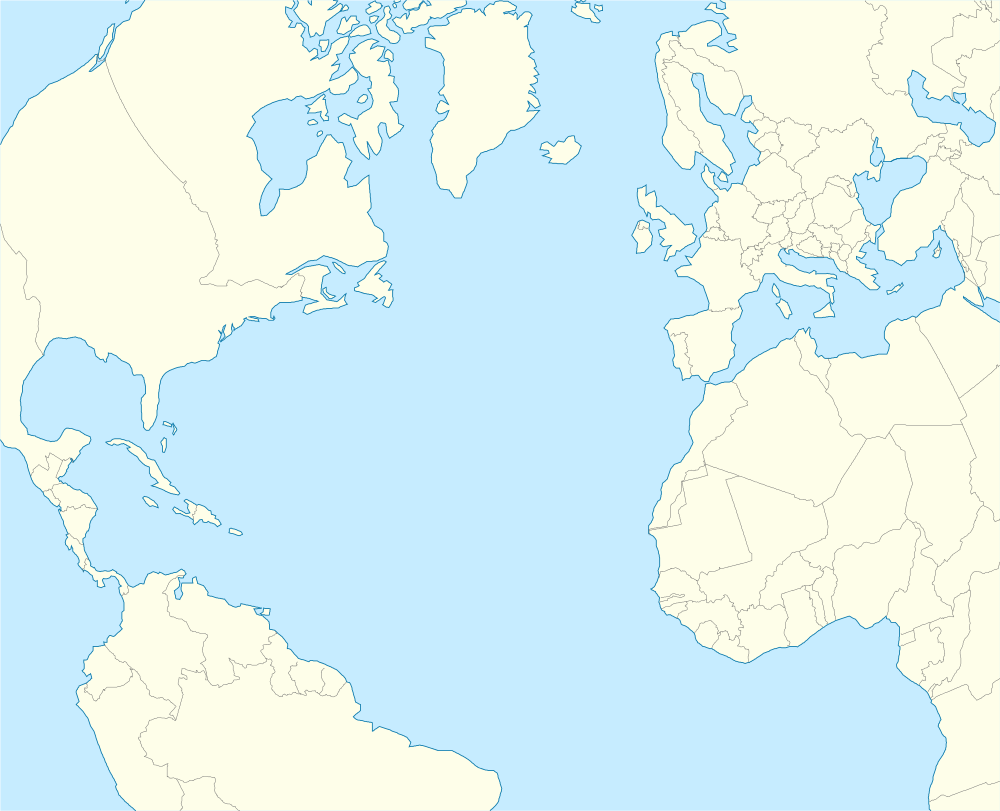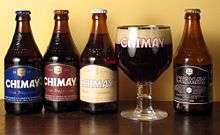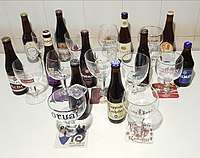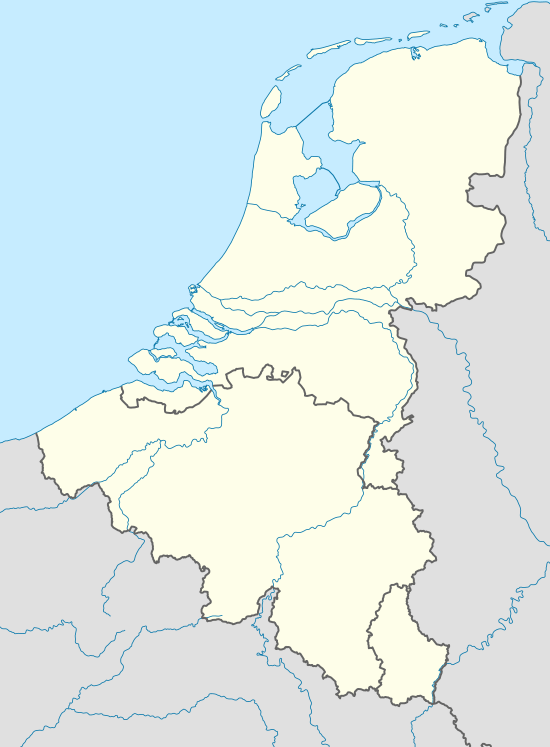Trappist beer

Trappist beer is brewed by Trappist monks. Twelve monasteries—six in Belgium, two in the Netherlands, and one each in Austria, Italy, England and the United States—currently brew Trappist beer.
History
The Trappist order originated in the Cistercian monastery of La Trappe, France. Various Cistercian congregations existed for many years, and by 1664 the Abbot of La Trappe felt that the Cistercians were becoming too liberal. He introduced strict new rules in the abbey and the Strict Observance was born. Since this time, many of the rules have been relaxed. However, a fundamental tenet that monasteries should be self-supporting is still maintained by these groups.
Monastery brewhouses, from different religious orders, have existed across Europe since the Middle Ages. From the very beginning, beer was brewed in French Cistercian monasteries following the Strict Observance. For example, the monastery of La Trappe in Soligny already had its own brewery in 1685. Breweries were later introduced in monasteries of other countries as the Trappist order spread from France into the rest of Europe. The Trappists, like many other religious orders, originally brewed beer to feed the community, in a perspective of self-sufficiency. Nowadays, Trappist breweries also brew beer to fund their works and charitable causes. Many of the Trappist monasteries and breweries were destroyed during the French Revolution and the World Wars. In the last 300 years, there were at least nine Trappist breweries in France, six in Belgium, two in the Netherlands, one in Germany, one in Austria, one in Bosnia and possibly other countries.
As of June 2018, twelve Trappist breweries are active—six in Belgium, two in the Netherlands, and one each in Austria, Italy and the United States.
In the twentieth century, the growing popularity of Trappist beers led some brewers with no connection to the order to label their beers "Trappist". After unsuccessful trials, monks sued one such brewer in 1962 in Ghent, Belgium.
The Dutch brewery De Koningshoeven produces Trappist beers – branded La Trappe – that are able to carry the "Authentic Trappist Product" logo. Their use of the International Trappist Association logo was withdrawn in 1999, but was restored in October 2005 (see Brouwerij de Koningshoeven for details). A second Dutch Trappist beer, branded Zundert and produced by Abdij Maria Toevlucht, made its debut in December 2013, and has also been granted permission to use the International Trappist Association logo.
International Trappist Association recognised breweries
In 1997, eight Trappist abbeys – six from Belgium (Orval, Chimay, Westvleteren, Rochefort, Westmalle and Achel), one from the Netherlands (Koningshoeven) and one from Germany (Mariawald) – founded the International Trappist Association (ITA) to prevent non-Trappist commercial companies from abusing the Trappist name. This private association created a logo that is assigned to goods (cheese, beer, wine, etc.) that respect precise production criteria. For the beers, these criteria are the following:[1]
- The beer must be brewed within the walls of a Trappist monastery, either by the monks themselves or under their supervision.
- The brewery must be of secondary importance within the monastery and it should witness to the business practices proper to a monastic way of life
- The brewery is not intended to be a profit-making venture. The income covers the living expenses of the monks and the maintenance of the buildings and grounds. Whatever remains is donated to charity for social work and to help persons in need.
This association has a legal standing, and its logo gives the consumer some information and guarantees about the product. Trappist breweries are constantly monitored to assure the irreproachable quality of their beers.
An expansion of ITA recognized breweries took place for the first time in 2012 when the trappist brewery of the abbey of Engelszell, Trappistenbrauerei Engelszell in Engelhartszell, Austria started brewing beer at the monastery (the former production had stopped in 1929) and in the same year obtained the Authentic Trappist Product logo for their beer.[2]
In December 2013, Maria Toevlucht's abbey (Zundert, the Netherlands) and St. Joseph's Abbey (Spencer, Massachusetts, United States) were both granted the ATP recognition for their trappist beers, followed in 2015 by Tre Fontane Abbey brewery in Rome, Italy.
The German Trappist abbey of Mariawald has not been producing beer since 1953 (however it is a founding member of the Trappist Association and uses the same Authentic Trappist Product logo for its other products).
In June 2018, the monks of Mount Saint Bernard Abbey, in Leicestershire became the first in the UK to brew a Trappist ale.[3][4] Called "Tynt Meadow" (7.4% ABV), after the location of the abbey, it is available to visitors and sold through public outlets.[4]
List of Trappist breweries
There are currently eleven[5] breweries allowed to display the Authentic Trappist Product logo on their products:
| Brewery | Location | Opened | Annual production (2004) |
|---|---|---|---|
| Brasserie de Rochefort | 1595 | 18,000 hL (15,000 US bbl) | |
| Brouwerij der Trappisten van Westmalle | 1836 | 120,000 hL (100,000 US bbl) | |
| Brouwerij Westvleteren/St Sixtus | 1838 | 4,750 hL (4,050 US bbl) | |
| Bières de Chimay | 1863 | 123,000 hL (105,000 US bbl) | |
| Brasserie d'Orval | 1931 | 71,000 hL (61,000 US bbl) | |
| Brouwerij der Sint-Benedictusabdij de Achelse Kluis (Achel) | 1998 | 4,500 hL (3,800 US bbl) | |
| Brouwerij de Koningshoeven (La Trappe) | 1884 | 145,000 hL (124,000 US bbl) | |
| Stift Engelszell | 2012 | 2,000 hL (1,700 US bbl) | |
| St. Joseph's Abbey in Spencer, Massachusetts | 2013 | 4,694 hL (4,000 US bbl) | |
| Brouwerij Abdij Maria Toevlucht (Zundert) | 2013 | 5,000 hL (4,300 US bbl) | |
| Tre Fontane Abbey | 2015 | 2,000 hL (1,700 US bbl) | |
| Mount St Bernard Abbey (Tynt Meadow) | 2018 | 2,000 hL (1,700 US bbl) |
The Trappist brewery at Mont des Cats, France is not allowed to use the ATP (Authentic Trappist Product) label.

Other Trappist beers
The French Trappist abbey of Sainte Marie du Mont des Cats has been selling beer since June 16, 2011. This abbey has no brewery at this time and does not plan to build one in the near future, for reasons of cost and brewing skills. They have not excluded rebuilding one brewery in the future.[6] The beer sold by Mont des Cats is produced by the Chimay brewery. Although the beer is produced by another Trappist brewery, Mont des Cats sells it and as such it does not bear the "Authentic Trappist Product" logo.[7]
Abbey beer
The designation "abbey beers" (Bières d'Abbaye or Abdijbier) was originally used for any monastic or monastic-style beer. After the introduction of an official Trappist beer designation by the International Trappist Association in 1997, it came to mean products similar in style or presentation to monastic beers.[8] In other words, an Abbey beer may be:
- Produced by a non-Trappist monastery—e.g. Cistercian, Benedictine; or
- produced by a commercial brewery under an arrangement with an extant monastery; or
- branded with the name of a defunct or fictitious abbey by a commercial brewer; or
- given a vaguely monastic branding, without specifically mentioning monastery, by a commercial brewer.
Types of beer
Trappist beers are mostly top-fermented, including La Trappe Bockbier, and mainly bottle conditioned. Trappist breweries use various systems of nomenclature for the different beers produced which relate to their relative strength.[9]
The best known is the system where different beers are called Enkel/Single, Dubbel/Double, Tripel/Triple and Quadrupel/Quadruple. These terms roughly describe both the amount of malt and the original gravity[10] for a Dubbel and triple for a Tripel, marking the casks accordingly.[11]
Colours can be used to indicate the different types, dating back to the days when bottles were unlabelled and had to be identified by the capsule or bottle-top alone. Chimay beer labels are based on the colour system (in increasing order of strength red, white and blue). Westvleteren beers are still unlabelled.
There is also a number system (6, 8 and 10, as used by Rochefort), which gives an indication of strength, but is not necessarily an exact alcohol by volume (ABV). Achel combine a strength and a colour (of the beer itself—blond or brown) designation.
Enkel
Enkel, meaning "single", is a term used by the Trappist breweries to describe the basic recipe of their beers.[9] The name fell out of fashion with no breweries (Trappist or 'Abbey') using the term until recent years. Instead, "Blond(e)" (La Trappe, Westvleteren), "5" (Achel) or "6" (Rochefort) have been used to describe the brewery's lightest beer. Chimay introduced an Enkel (called Dorée or Gold) commercially in bottles in 2015,[12] Westmalle made their Enkel (called Extra) available commercially through some outlets in 2010,[13] and St Bernadus followed suit with their Extra 4 in 2014.[14] The term is often used interchangeably with 'Patersbier' (meaning Father's beer), as Enkels are a weak beer brewed originally to be consumed by the monks themselves.
Dubbel
Dubbel is a Trappist breweries' naming convention.[15] The origin of the dubbel was a beer brewed in the Trappist Abbey of Westmalle in 1856. Westmalle Dubbel was imitated by other breweries, Trappist and commercial, Belgian and worldwide, leading to the emergence of a style. Dubbels are understood to be a fairly strong (6–8% ABV) brown ale, with understated bitterness, fairly heavy body, and a pronounced fruitiness and cereal character. Examples are: Westmalle Dubbel, Chimay Red/Premiere, Koningshoeven/La Trappe Dubbel, Achel 8 Bruin and Rochefort 6.
Tripel

Tripel is a naming convention traditionally used by Belgian Trappist breweries to describe the strongest beer in their range. Westmalle Tripel is considered to be the foundation of this beer style, and was developed in the 1930s. Achel 8 Blond, Westmalle Tripel, La Trappe Tripel, and Chimay White/Cinq Cents are all examples of Trappist tripels. The style has proven more popular among secular breweries like St. Feuillien, Bosteels and St. Bernardus. Tripels as a style are generally beers with an alcohol content ranging from 8% to 10% ABV.
Others
Quadrupel is the name Koningshoeven gave to a La Trappe ale they brew which is stronger than their tripel. Rochefort 10 is also an example of a quadrupel.
Ranges
The official Trappist breweries produce the following beers for consumption:
- Achel produces: Blond (Belgian strong ale, 8% ABV), Bruin (Belgian strong ale, 8% ABV), Extra Blond (Abbey tripel, 9.5% ABV), Extra Bruin (Abbey quadrupel, 9.5% ABV).
- Chimay produces: Dorée (Belgian strong ale 4.8% ABV), Brune (Abbey dubbel, 7% ABV), Triple (Abbey tripel, 8% ABV), Bleue (Abbey quadrupel, 9% ABV) and Chimay vieillie en barriques (Abbey quadrupel, barrel aged, 10.5% ABV)
- Orval produces: Orval (Belgian ale, 6.2% ABV).
- Rochefort produces: "6" (Abbey dubbel, 7.5% ABV), "8" (Belgian strong ale, 9.2% ABV) and "10" (Abbey Quadrupel, 11.3% ABV).
- Westmalle produces: Dubbel (Abbey dubbel, 7% ABV) and Tripel (Abbey tripel, 9.5% ABV).
- Westvleteren produces: Green Cap or Blonde (Belgian ale, 5.8% ABV), Blue Cap or "8" (Belgian strong ale, 8% ABV) and Yellow Cap or "12" (Abbey quadrupel, 10.2% ABV).
- Stift Engelszell produces Nivard (Belgian ale, 5.5% ABV), Benno (Abbey dubbel, 7% ABV) and Gregorius (Abbey Quadrupel, 9.7% ABV).
- La Trappe produces: Puur (organic pale ale, 4.7% ABV), Witte Trappist (witbier, 5.5% ABV), Blond (Belgian ale, 6.5% ABV), Dubbel (Abbey dubbel, 7% ABV), Bockbier (bockbier, 7% ABV), Isid'or (Belgian ale, 7.5% ABV), Tripel (Abbey tripel, 8% ABV), Quadrupel (Abbey quadrupel, 10% ABV) and Quadrupel Oak Aged (Abbey quadrupel, barrel aged, 10% ABV).
- Zundert produces Zundert (Abbey tripel, 8% ABV) and Zundert 10 (Abbey quadruple, 10% ABV).
- Mount St Bernard Abbey produces: Tynt Meadow (Abbey dubbel, 7,4% ABV).
- Spencer produces: Trappist Ale (Belgian ale, 6.5%), India Pale Ale (IPA, 7.2% ABV), Holiday Ale (Belgian strong ale, 9% ABV), Trappist Imperial Stout (Stout - imperial, 8.7% ABV) and Monk's Reserve (Abbey quadruppel, 10.2% ABV).
- Tre Fontane produces: Scala Coeli (Belgian ale, 6.3% ABV) and Tre Fontane (Abbey tripel, 8.5% ABV).
In addition to the above, a lower-strength beer is sometimes brewed for consumption by the Brothers (patersbier) or sold on site.
Glassware
Belgian breweries have a tradition of providing custom beer glasses: with Trappist breweries, this often takes the form of providing "chalice" or "goblet" style glasses. The distinction between goblet and chalice is typically in the glass thickness. Goblets tend to be more delicate and thin, while the chalice is heavy and thick walled. Some chalices are etched on the bottom to nucleate a stream of bubbles for maintaining a nice head.
 Chimay beers and glass
Chimay beers and glass Orval beer's "chalice" glass
Orval beer's "chalice" glass Rochefort beer's "goblet" glass
Rochefort beer's "goblet" glass Eleven Trappist beers and glasses
Eleven Trappist beers and glasses
Beer tourism
The idea of visiting Trappist monasteries to sample their beers has become more popular in recent years, partly due to promotion by enthusiasts such as the 'beer hunter' Michael Jackson. Some brewing monasteries maintain a visitors ' center where their beers can be tasted and bought (sometimes with other monastic products such as bread and cheese).[16][17] Visits to the monastery itself are usually not available to the general public, although visitors can overnight in some of the monasteries (like Achel) if their purpose is non-touristic. Currently, Koningshoeven (which brews La Trappe) in Netherlands offers regular tours around their bottling plant, old brewery and parts of their site, along with a beer tasting.[18]
See also
References
- ↑ "Trappist beers". The International Trappist Association. Retrieved 16 May 2016.
- ↑ "The ATP logo for "Gregorius" and "Benno"!". 21 November 2012.
- ↑ Owen, Dave (2017-10-25). "Brewery set to be built in county – and ran by Trappist monks". leicestermercury. Retrieved 2018-03-05.
- 1 2 "Monks brew UK's first Trappist beer". BBC News. 25 June 2018. Retrieved 29 June 2018.
- ↑ "International Trappist Association". Trappist.be. Retrieved 2018-03-01.
- ↑ Press conference at the abbey. Youtube. Retrieved 2012-05-02.
- ↑ "International Trappist association - Products/Trappist Beers/Mont des cats" (in French). Retrieved 2012-05-02.
- ↑ McFarland, Ben (2009). World's Best Beers: One Thousand Craft Brews from Cask to Glass. Sterling Publishing Company, Inc. p. 38. ISBN 1-4027-6694-7. Retrieved 2011-01-13.
- 1 2 van Lierde, pp. 25–26
- ↑ Oliver, Garrett. The Oxford Companion to Beer. ISBN 978-0195367133.
- ↑ "Michael Jackson's Beer Hunter - Down on your knees to bless monks' top ale". www.beerhunter.com. Retrieved 2009-07-11.
- ↑ "Chimay Dorée / Spéciale du Potaupré". RateBeer. Retrieved 2018-03-05.
- ↑ "New Product : Shop Westmalle-Extra Trappist Beer @ www.belgiuminabox.com | Belgiuminabox". belgiuminabox.com. Retrieved 2018-03-05.
- ↑ "Sint Bernardus - Watou - Brouwerij ST.Bernard - Sint Bernardus,Watou, Brouwerij ST.Bernard, Bier,Abdijbier,Witbier,Grottenbier,ABT 12,ABT12,Prior 8,Prior8,Pater6,Pater 6,St.Bernardus Tripel,St.BernardusTripel,Watou Tripel,WatouTripel,St.BernardusWitbier,St.Bernardus Witbier,Grottenbier". www.sintbernardus.be. Retrieved 2018-03-05.
- ↑ van Lierde, p. 25
- ↑ "Espace Chimay". Retrieved 2014-09-26.
- ↑ "Visit Orval". Retrieved 2014-09-26.
- ↑ "Visit us". www.latrappetrappist.com. Retrieved 2018-03-05.
